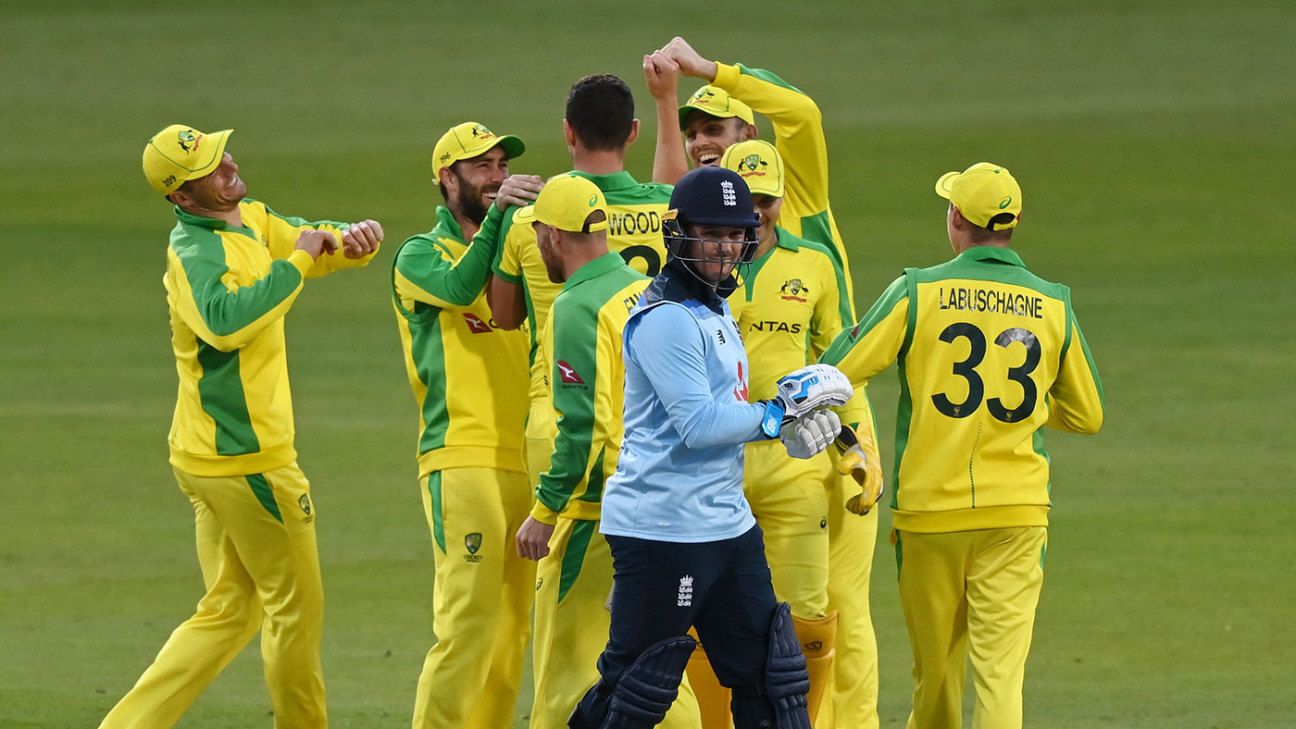
There's a key reason performances against Australia remain the barometer of health for England sides.
It's not just history or tradition. And it's not just that there's no such thing as a dead encounter involving a side which appears to have a love of beating England in their DNA.
It's that, however much it may be unpalatable to many, the base level of cricket in Australia is, nearly always, a bit higher than England's. Almost however you judge it: the strength and athleticism of juniors; the standards of club (or Grade) cricket (though this may be changing); the long-term records in global tournaments and in rankings tables. Australia have been, almost always, formidable opponents. And when they do have dips, they are rarely as deep and seldom as long as England's. It's been this way, more or less, since 1880.
If that sounds like hyperbole, consider the respective records in World Cups. It's not just that Australia have won five of the things (compared to England's once), it's that even in years when they are not expected to challenge - such as 2019 - they manage to reach the semi-finals. England had a couple of decades where they aspired to semi-finals and tended to have to settle for a drubbing at the hands of Pitcairn Island.
So, when England beat Australia, they know they are in good condition. And when they lose to them, well, they are given an insight into the standards required.
The point of all this?
England came into this game full of confidence. For the first time in their ODI history and against their oldest foe, they were the world champions. They had nine of the team that played in the final involved here and they won the toss.
ALSO READ: Billings century in vain as Australia seal 19-run victory
Yet Australia provided the harshest of wake-up calls. It's not that England played poorly. It's more that Australia were, in several respects, simply better than them. Their fielding; their new-ball bowling, their resilience in fighting back from 123 for 5 in the 24th over of their innings. There were moments in this match when they looked unstoppable.
Josh Hazlewood, in particular, was magnificent. He hit the pitch hard, gained the same sort of seam movement that renders him such a fine Test bowler and claimed two important wickets - and conceded just five runs - from his first six overs. It was brilliant stuff.
But every state in Australia seems to have a dozen fast bowlers built like Hazlewood. Sure, they may not be quite as consistent or quite as skilful. But they're just as broad and tall and robust and quick. In England, fast bowlers like this come along rarely. And when they do, they tend to be broken or ruined by the time they're 25.
But the biggest difference between the sides, and not for the first time, is in the fielding. While England's currently appears to be in something of a dip - it's been modest in all formats all summer, really - Australia seem to punish every mistake by England's batsmen.
Compare, for example, Tom Banton's dropping of Maxwell on the midwicket fence when he had 10, here, and Steve Smith's catch to dismiss Moeen Ali in the final match of the T20I series. They weren't identical, by any means. And it's probably harsh on Banton to even characterise his semblance of a chance with a drop.
But the fact is, Smith utilised every millimetre of the playing area to give himself the best chance of clinging on to the desperately tough catch, while Banton was a few yards off the boundary - possibly intentionally - and therefore not in position to take the chance. Much the same could have been written about Sam Billings' dropping of Mitchell Starc here with Hazlewood's catch to end Bairstow's resistance. Australia, it might be noted, did not drop a chance during the T20I series; England dropped three.
Maybe England's openers, in top form, would have been able to hit the bowlers off their lengths. Maybe, had Ben Stokes been available, England would have had the seam-bowling support they required to capitalise on reducing Australia to 123 for 5 in the 24th over of their innings. Maybe he would even have been able to pull off another miracle with the bat, too. And maybe, if Liam Plunkett were still in the team, that sixth-wicket stand of 126 between Glenn Maxwell and Mitchell Marsh could have been snuffed out before it turned this game. Plunkett's record as a mid-innings wicket-taker is extraordinary, after all. There is no obvious replacement for him.
That's not to say Plunkett should have been here. He hasn't played a match this season, for a start. And while it was brutal of England to move on from him quite so quickly after he had done so much to help them win the World Cup, that doesn't necessarily mean it was wrong. Plunkett is 35, after all. Is he really going to be a force in the next World Cup in India?
The point is, this result wasn't so much a reflection of what England did wrong as much as it was a reflection of everything Australia did right. Strange though it may sound, the No. 1 side in the world in ODI cricket could learn a few things from the No. 5 side.
There is an encouraging aspect to all this for England. For a start, England showed impressive resilience in pushing Australia all the way here. At one point, after 22 overs, they had scored 48 runs fewer than Australia at the same stage. To go within 20 represented something of a comeback. The second half of Billings' innings was exceptionally good and suggested he could yet carve out a future for himself at this level.
But more than that, it's quickly overlooked now but, earlier in the World Cup, Australia inflicted another heavy defeat on England. On that occasion, Aaron Finch scored a century and Jason Behrendorff claimed five wickets as Australia won by 64 runs. Yet three weeks later, England were back at Lord's having thrashed Australia in the semi-final. And we all know how the final finished.
So England can come back from this. Of course they can. But, boy, they're going to have to play well.















 Phone: (800) 737. 6040
Phone: (800) 737. 6040 Fax: (800) 825 5558
Fax: (800) 825 5558 Website:
Website:  Email:
Email: 






